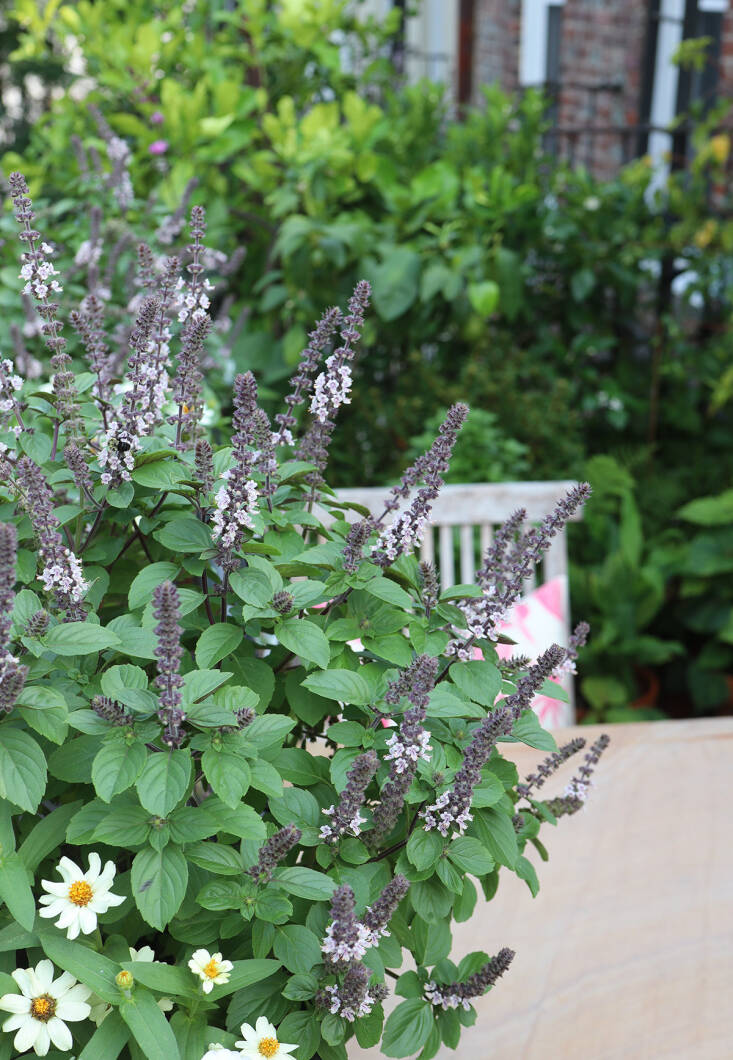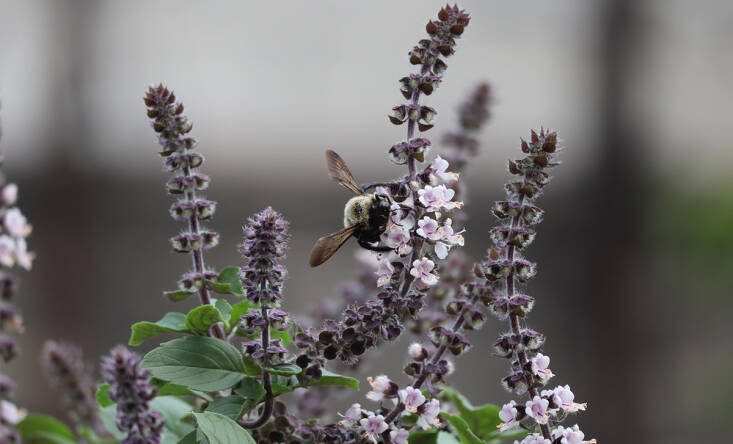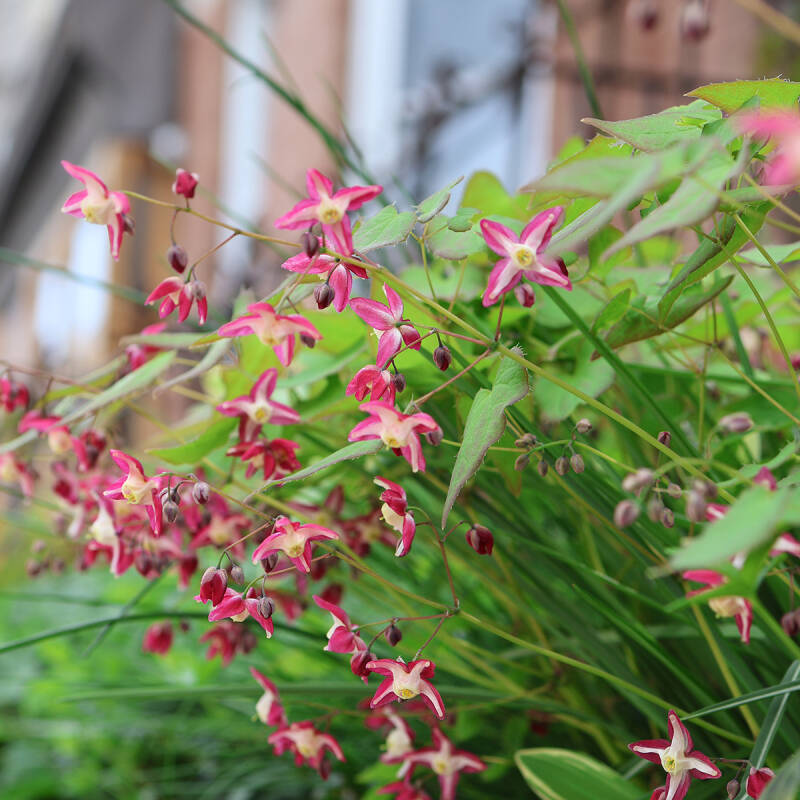African Blue Basil, Ocimum kilimandscharicum x basilicum
Whether you garden in-ground or in a single windowbox, there is a plant that will lure every pollinator in the neighborhood to your green space. African blue basil’s myriad flowers, in bloom for months, guarantee a flurry of constant and diverse pollinator activity from morning until twilight, and from early summer until frost. There is never a lull in winged activity. And with the right plant for pollinators, even a tiny urban space can contribute to a pollinator pathway—a pesticide and herbicide-free corridor of plants that provides food and shelter for pollinating insects, which are in decline due to loss of habitat and to widespread pesticide use.
It doesn’t hurt, either, that spending ten minutes on a bee safari is a very effective way of disconnecting from digital noise and reconnecting with the small vibrating things that matter.
Photography by Marie Viljoen.

In a small space every inch counts, and the ideal plant has to work hard: It should be low-maintenance, bloom for months, have fragrant and edible leaves, and offer an irresistible nectary for a host of beneficial insects. That’s asking a lot. A very small handful of plants checks all those demanding boxes. African blue basil comes out pretty much at the top.

Native plant advocates might frown at an exotic plant being promoted for pollinators, but there are some mitigating factors to consider. Not everyone has the space for a collection of native perennials chosen for a bloom-sequence staggered for months-long interest (with a couple of exceptions, most perennials tend to flower for just a few weeks). And some perennials, like milkweeds and bee balms, resent being potted and perform best in-ground. City gardeners are often confined to containers, while most urban dwellers have no more than a windowsill to grow anything. African blue basil fits this demographic perfectly.

You may associate basil with pesto and pesto with Italy; it can be a surprise to learn that multiple species of basil are native to Africa (and if not Africa, to tropical Asia as well as subtropical America). As a culinary aside, if you like Eritrean and Ethiopian food, basil is a foundational part of the spice collection that informs these complex cuisines. One African basil is Ocimum kilimandscharicum, a so-called camphor basil, named for those pungent undertones. It resembles a woody shrub in mild climates and has white flowers on green racemes. Crossed* with the purple O. basilicum ‘Dark Opal’, African blue basil is born: Ocimum kilimandscharicum x basilicum. Its white and violet flowers are effectively displayed against a backdrop of elongated and moodily aubergine spires.
* This cross (a.k.a hybrid) occurred spontaneously in Southeast Ohio in 1982, at Companion Plants Ohio, a nursery specialising in edible plants. A single seedling was nurtured and is the parent of all the African blue basil we see today. The plants are sterile, and are propagated via cuttings.

In regions with hard winters African blue basil grows as an annual (although you can overwinter it indoors). In USDA hardiness zones 10 and 11, it is a short-lived shrub.

There are two reasons why this is an outstanding plant for pollinators:
First, those flowers: As soon as it is established African blue basil begins producing an unusually dizzying number of flowers on distinctively elongated spires (they’re long-lasting cut-flowers, too). Buds keep opening, bees keep coming.
Second, African blue basil is the most heat-tolerant of basils, as well as being forgiving of high humidity. (By contrast, I keep my sweet and opal basil plants in semi-shade to shelter them from the sun.) In deep but narrow windowboxes on my terrace this basil is in full sun, and thrives.
There is a caveat: While it is resilient in heat, African blue basil is not drought-tolerant. It will require supplemental watering if there is no daily rain.

Another reason to like African blue basil is that it is sterile, and produces no seed. If it were not I think it would have real invasive potential in milder and Mediterranean climates (looking at you, West Coast). To create more basil plants, simple root cuttings in jars of water, and then plant out.

Cheat Sheet
- African blue basil is a spontaneous hybrid created by the crossing of African basil Ocimum kilimandscharicum with Ocimum basilicum ‘Dark Opal’ at Companion Plants Ohio, in 1982.
- It is sterile: All those flowers produce no seeds.
- You can make more African blue basil plants by rooting cuttings in water (extra plants are nifty gifts for friends).
- In USDA zones 10 – 11 African blue basil is a perennial, and grows like a woody shrub.
- In colder climates it is an annual, but can be overwintered indoors.
- African blue basil is very heat- and humidity-tolerant.
- It is not drought-tolerant and appreciates regular water and excellent drainage.
See also:
- Basil, Burrata, and the Last Salads of Summer
- Gardening 101: Basil
- Will I Ever Be Able to Grow Enough Basil to Make Pesto?










Have a Question or Comment About This Post?
Join the conversation (0)